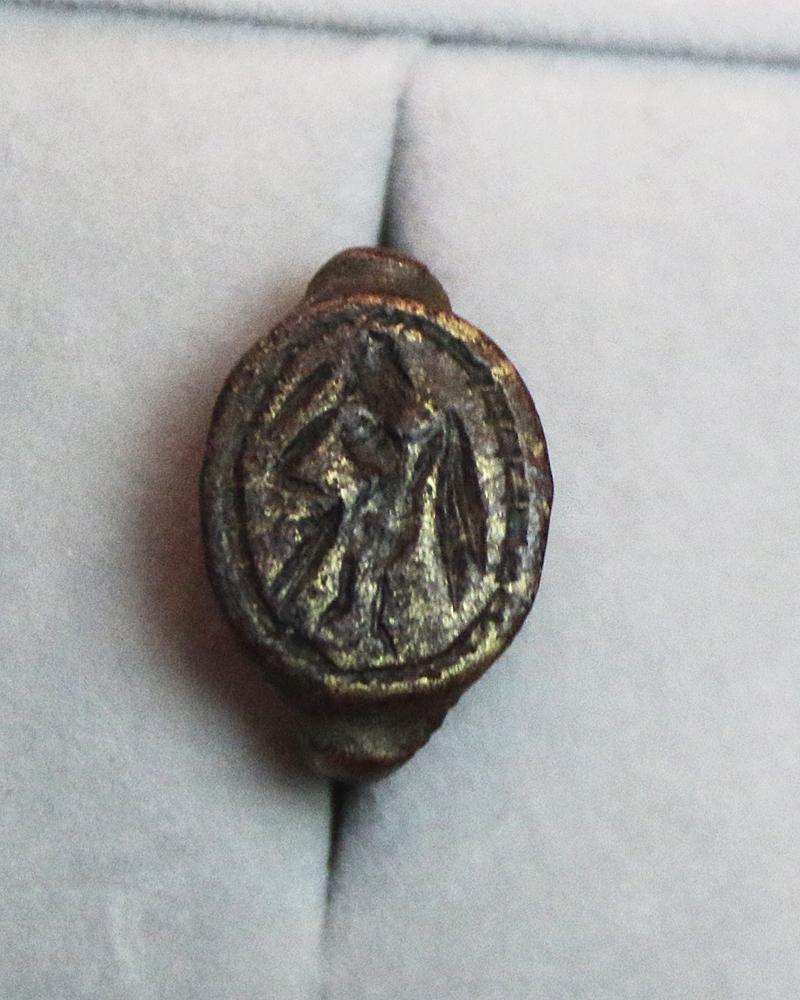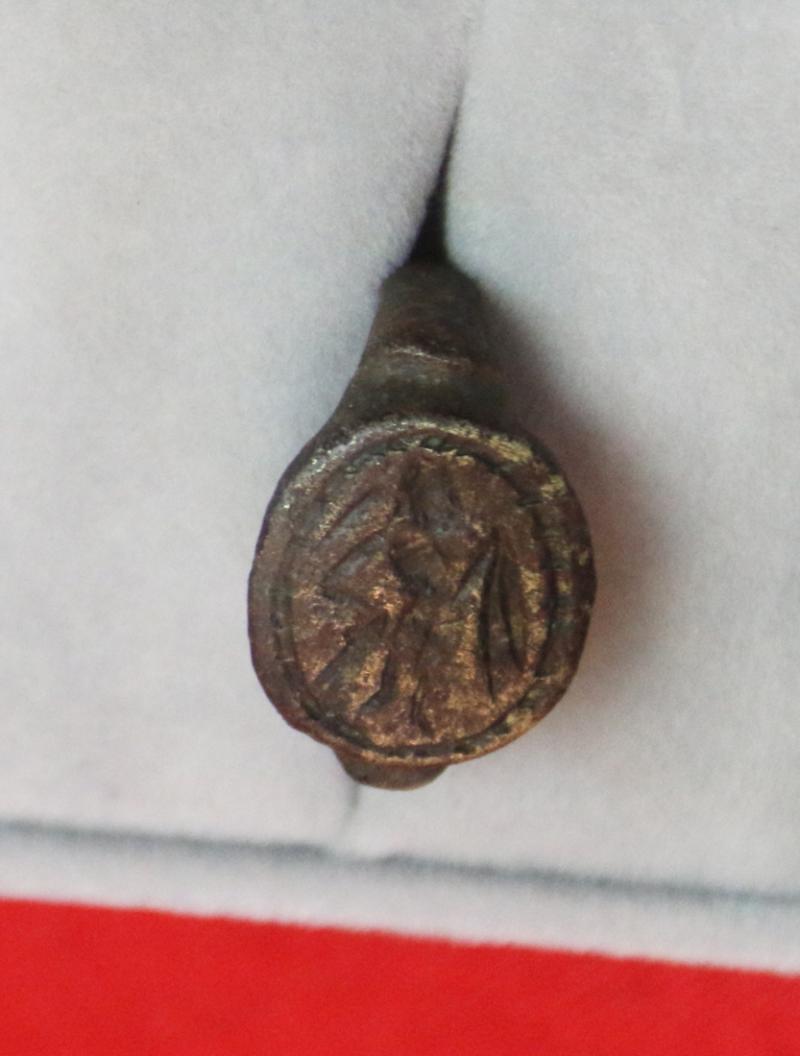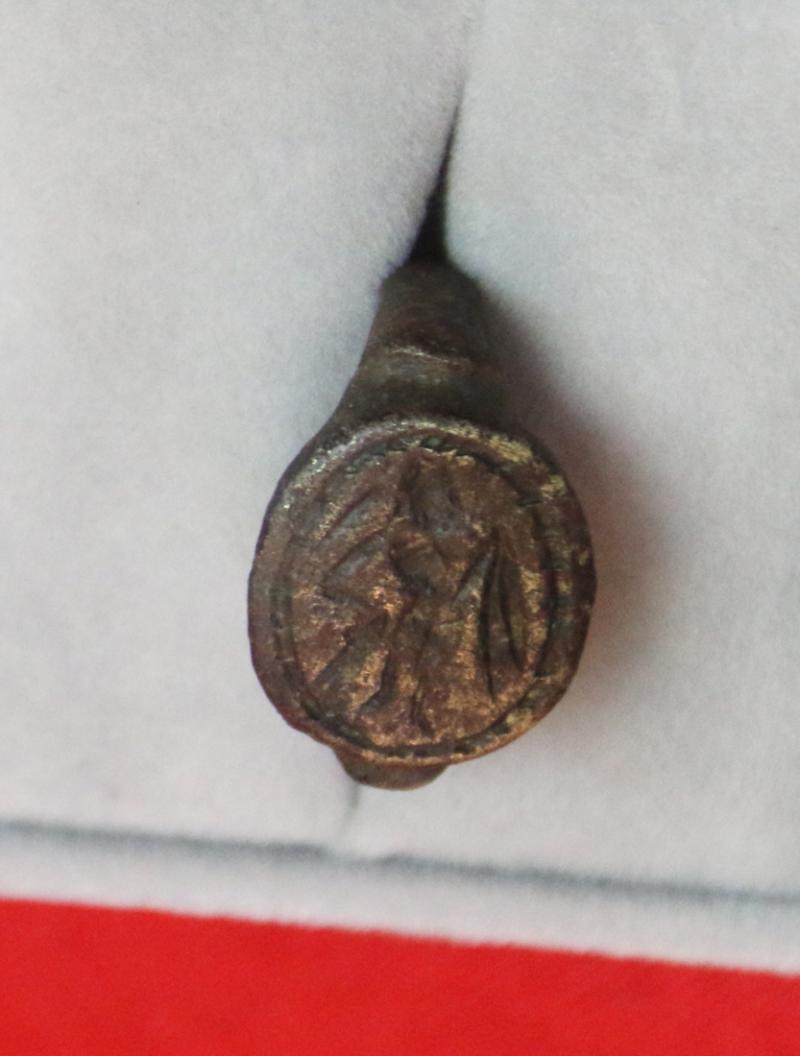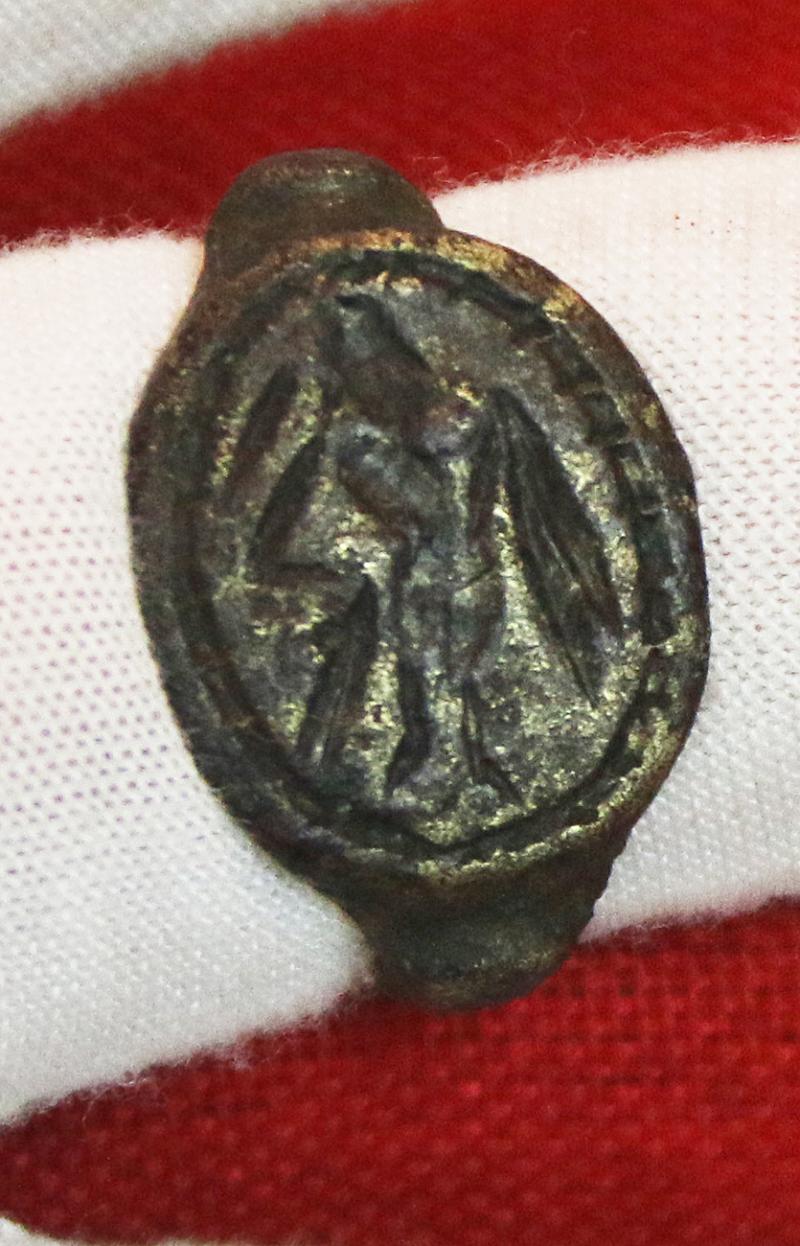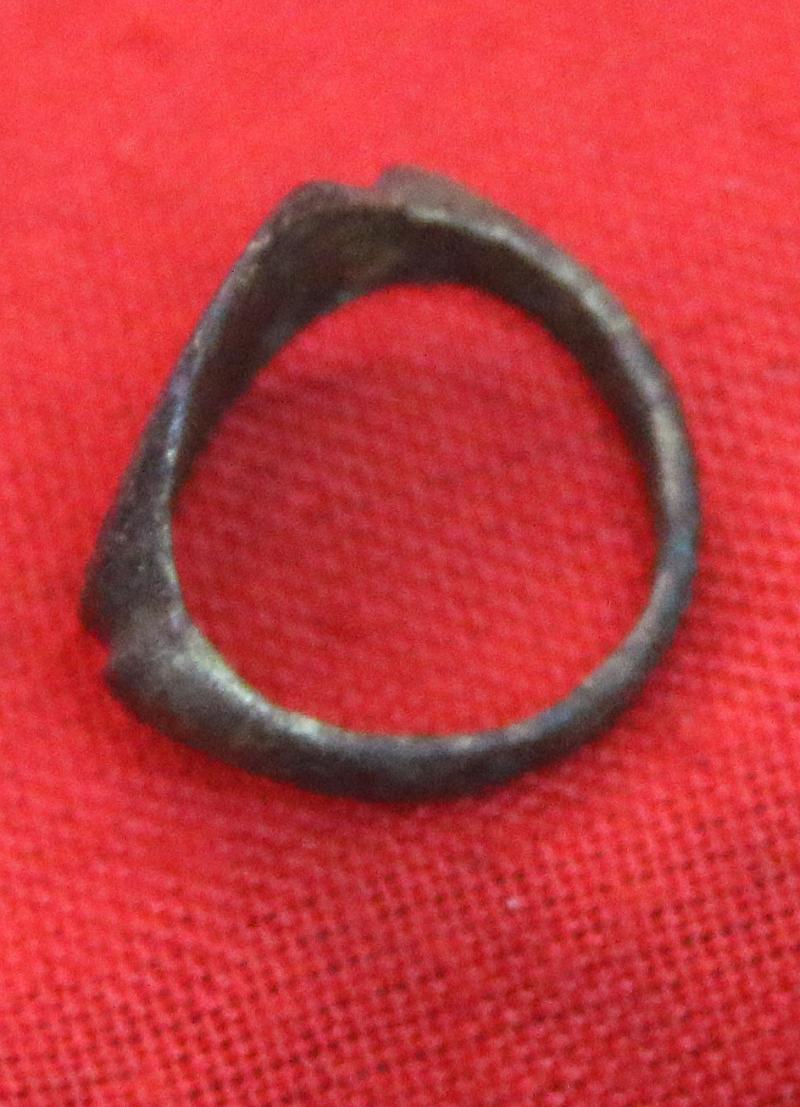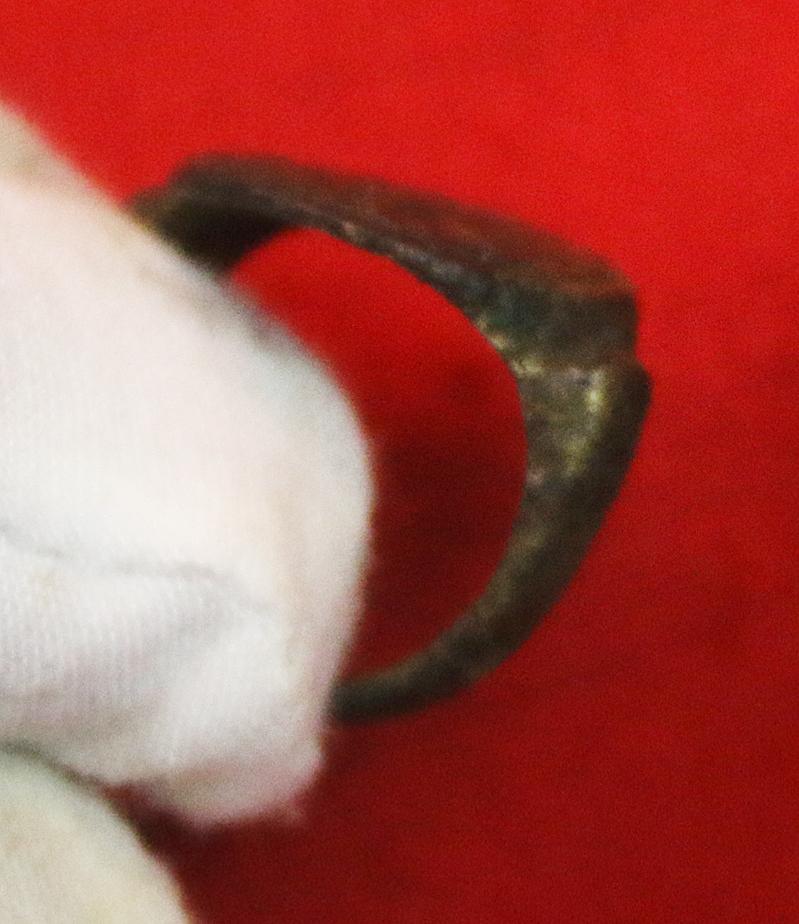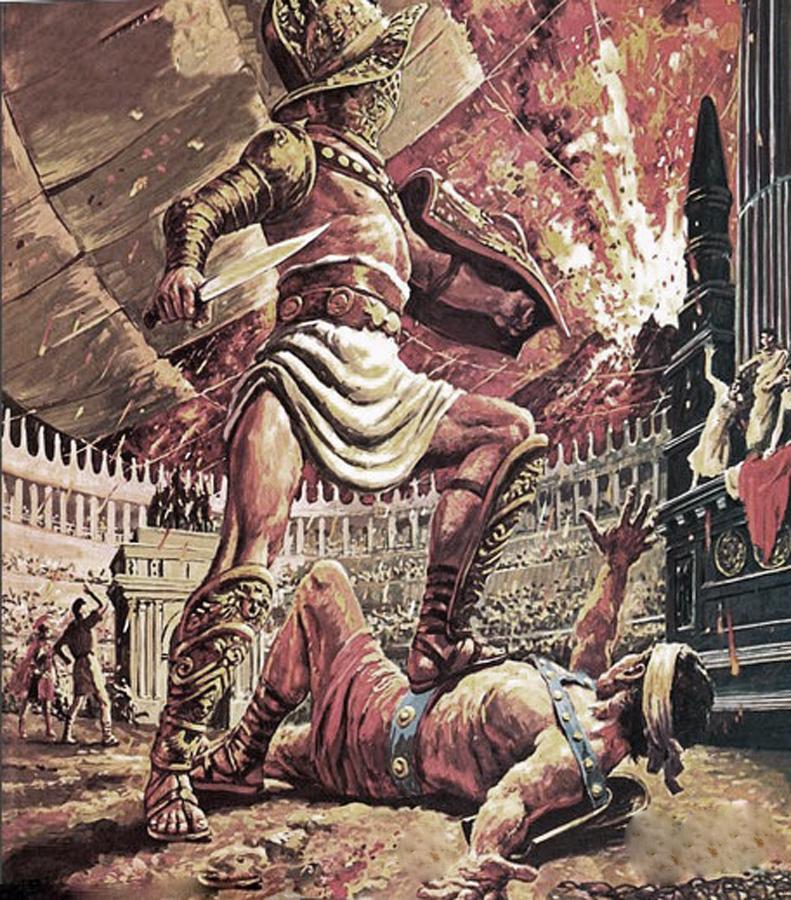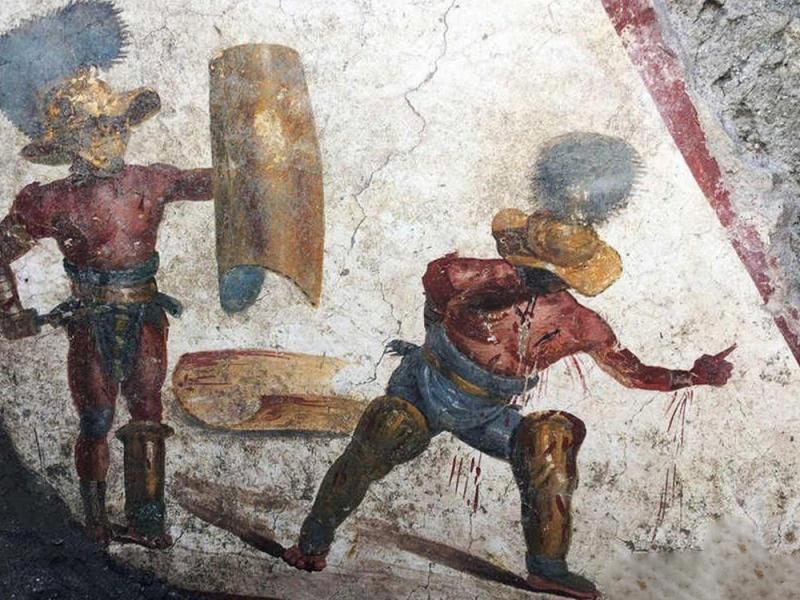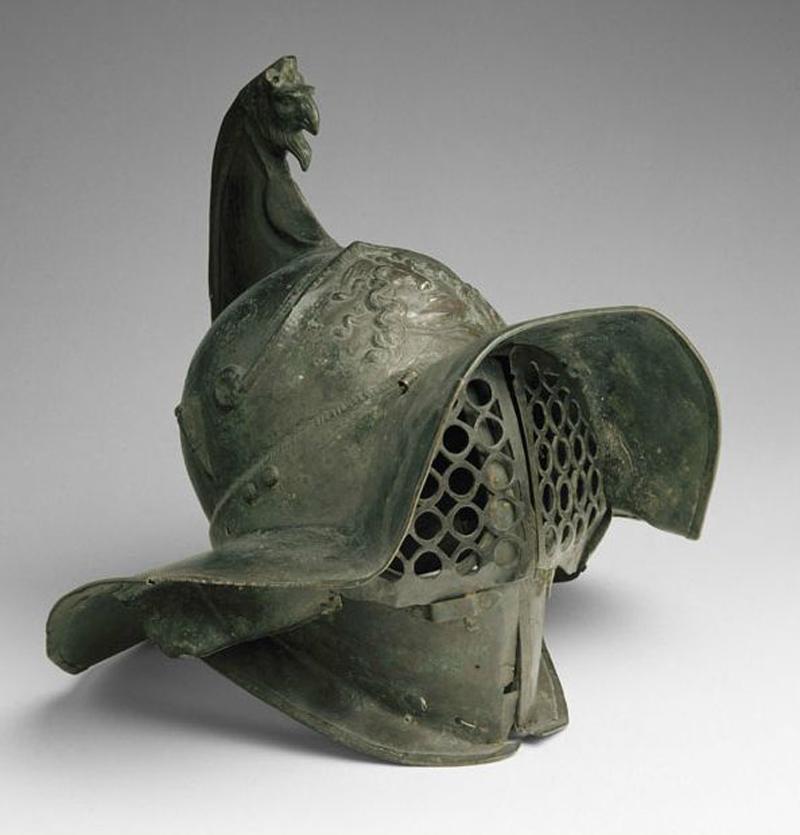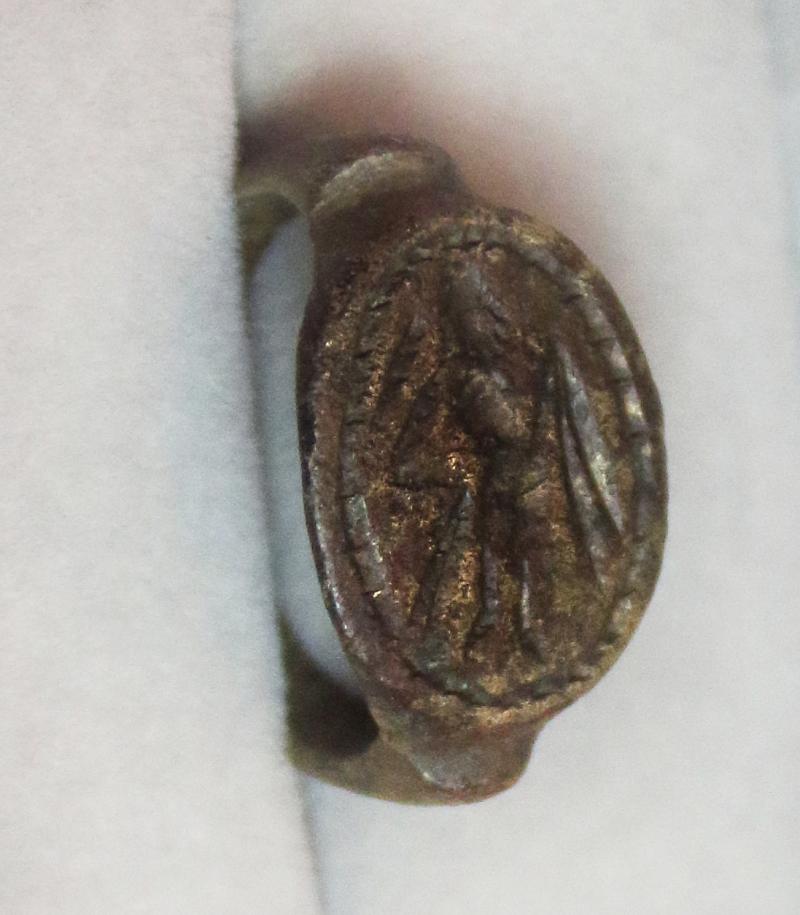A Imperial Roman 1st Century Gladiator's Ring, Decorated With a Gladiator in Combat Holding Sword, or Flagellum and Shield
In copper bronze with excavated patination. Worn either by a higher ranking, possibly freed gladiator, or, possibly an owner of gladiators, the world famous combat slaves of Rome.
Classified by the seminal classification of ancient ring forms, by Dr. Martin Henig, as Ancient Roman, Henig type Xb.
This is only the fourth, original imperial gladiator's ring of this type, depicting a gladiator in combat stance, we have had in a decade or more, the last but one was museum restored from three broken pieces, this one is still in one sound piece.
From a collection of antiquities, swords daggers, and rings, that just arrived this week, in early July, many pieces sold for the part benefit of the Westminster Abbey fund, and the Metropolitan Museum fund
The wearing of the ring was the prerogative alone of Roman citizens or those of high rank and esteem, that some gladiators always aspired to but rarely achieved due to their short life span within their violent craft. However some did achieve such great success and were rewarded with riches, freedom and the right to wear the traditional Roman bronze status ring.
Engraved with a standing Gladiator, he is wearing, likely, a gladiators grilled front helmet, holding a shield in his left hand, and a sword or maybe trident in his right.
See photos 7 and 8 of a similar Gladiator's helmet as we can see the gladiator likely wears in this ring intaglio. The original helmet we show is made from bronze, and richly decorated with a gorgon's and a griffin's head, from the 1st Century AD, around the same age as this ring, and it was found at Pompeii.
Another picture in the gallery no 10 is of a well-preserved fresco, recently unearthed in Pompeii—the Roman city razed by Mount Vesuvius’ eruption in 79 A.D.—it depicts the final act of a gladiator fight: As one combatant begs for mercy, the victorious warrior awaits instructions on whether to kill or spare his opponent. The ring looks as if it depicts a portion of very similar scene in fact, the subject gladiator on the ring appears to be either injured or leaning back to avoid an opponent's weapon thrust
This fabulous ring,and it is a remarkable artefact of original Roman gladiator combat
Within the intaglio engraving the gladiator's right hand holds what appears to be some kind of weapon, possibly a sword or trident, possibly the same as in the Pompeii fresco.
A gladiator was an armed combatant who entertained audiences in the Roman Republic and Roman Empire in violent confrontations with other gladiators, wild animals, and condemned criminals. Some gladiators were volunteers who risked their lives and their legal and social standing by appearing in the arena. Most were despised as slaves, schooled under harsh conditions, socially marginalised, and segregated even in death.
Irrespective of their origin, gladiators offered spectators an example of Rome's martial ethics and, in fighting or dying well, they could inspire admiration and popular acclaim. They were celebrated in high and low art, and their value as entertainers was commemorated in precious and commonplace objects throughout the Roman world.
The origin of gladiatorial combat is open to debate. There is evidence of it in funeral rites during the Punic Wars of the 3rd century BC, and thereafter it rapidly became an essential feature of politics and social life in the Roman world. Its popularity led to its use in ever more lavish and costly games.
The gladiator games lasted for nearly a thousand years, reaching their peak between the 1st century BC and the 2nd century AD. Christians disapproved of the games because they involved idolatrous pagan rituals, and the popularity of gladiatorial contests declined in the fifth century, leading to their disappearance.
*Please bear in mind almost all original engraved Roman rings are engraved with scenes in the naive stylized form, and not intended to be a naturalistic interpretation as was usual in nobles gold seal rings, also their marble or bronze scuptures and statuary.
Code: 24844

